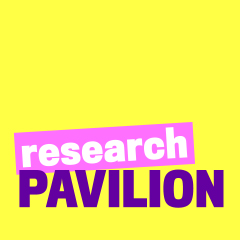Baroque music is perhaps still associated by many with stiff chamber music. As a harpsichordist, my experience is very different. I find 17th century music very emotional and physical. It expresses harsh, visceral realities, like a Caravaggio painting – full of dramatic shadows. The harpsichord is how it all began. I began playing as a young girl at music school. Many people regard the harpsichord as an exotic instrument, but for me it’s just a sound among others – colourful and beautiful – not a sound related to a bygone era. Nowadays I give about 70 concerts a year as a freelance musician.
My doctoral project explores the emotional sensibilities of early 17th century music, specifically Italian music of the seconda pratica, which is a free Baroque style challenging the rigorous conventions of the prima pratica. It was essentially a movement seeking new ways of expressing emotion through music. “Artistic research” is the term I prefer to apply to my work. There’s a theory component, but my doctoral project is practice-based. It consists of five experimental concerts in which I will collaborate with artists of various contemporary art forms to access the affects and passions of Baroque music. Di anima et di corpo was the title of my first concert, which was an interdisciplinary collaboration with choreographer Anna Mustonen and the Zodiak Centre for New Dance. Fusing harpsichord and contemporary dance, it explored the Baroque idea of how music consumes the human body with overwhelming emotion.
SILO 468 was the venue of my second experimental concert, AD OLIO. The haunting acoustics of this disused oil silo created a “sacred” space that physically enfolds the audience in a blanket of sound. This corresponds to the Baroque perception of music, which was very physical. A classical concert hall isn’t always the best place to express such raw physicality. Frescobaldi, Merula, D’India, Peri and Strozzi are the composers featured in AD OLIO, which is a unique arrangement of harpsichord, jazz trumpet and electronic sounds, taking Baroque music in a wholly uncharted direction. It’s a unique musical encounter opening up new perspectives on 17th century songs.
Improvisation is a natural part of Baroque music. Most people don’t realize this, but many Baroque scores are quite sketchy and incomplete. The trumpeter, Verneri Pohjola, plays the vocal line, bringing his unique musicianship to the treatment of the melody. All three of us do a lot of improvising on stage. I see improvisation as a gateway to accessing emotions buried in music that is culturally and temporally remote to us. At the Venice Research Pavilion we will perform a new interpretation of AD OLIO. After that, I will stage three more doctoral concerts exploring new ways of conveying the affective content and bodily basis of Baroque music. What I am ultimately exploring is the reason that music exists in the first place: to express emotion.
Marianna Henriksson
- Born 1983, based in Helsinki and Berlin
- Freelance harpsichordist
- Master of Music, Sibelius Academy, 2010
- Berlin Universität der Künste Konzertexamen, 2012
- Doctoral student, DocMus Doctoral School, Sibelius Academy, 2014-
- Doctoral project exploring the emotional expressivity of early 17th century music
- The project will consist of five concerts, three of which await their debut
This article has originally been published in the May issue of Uniarts Helsinki's IssueX magazine, this time a special edition dedicated to the Research Pavilion.
